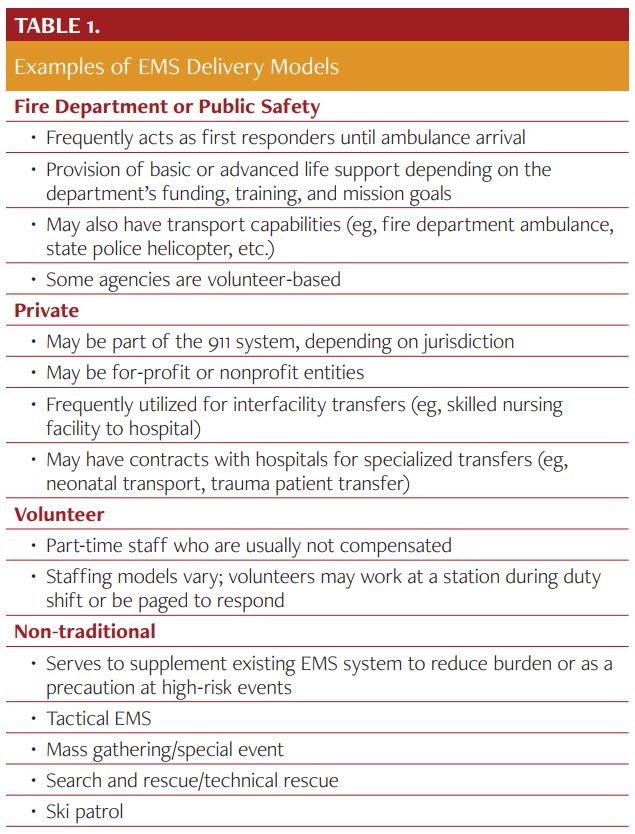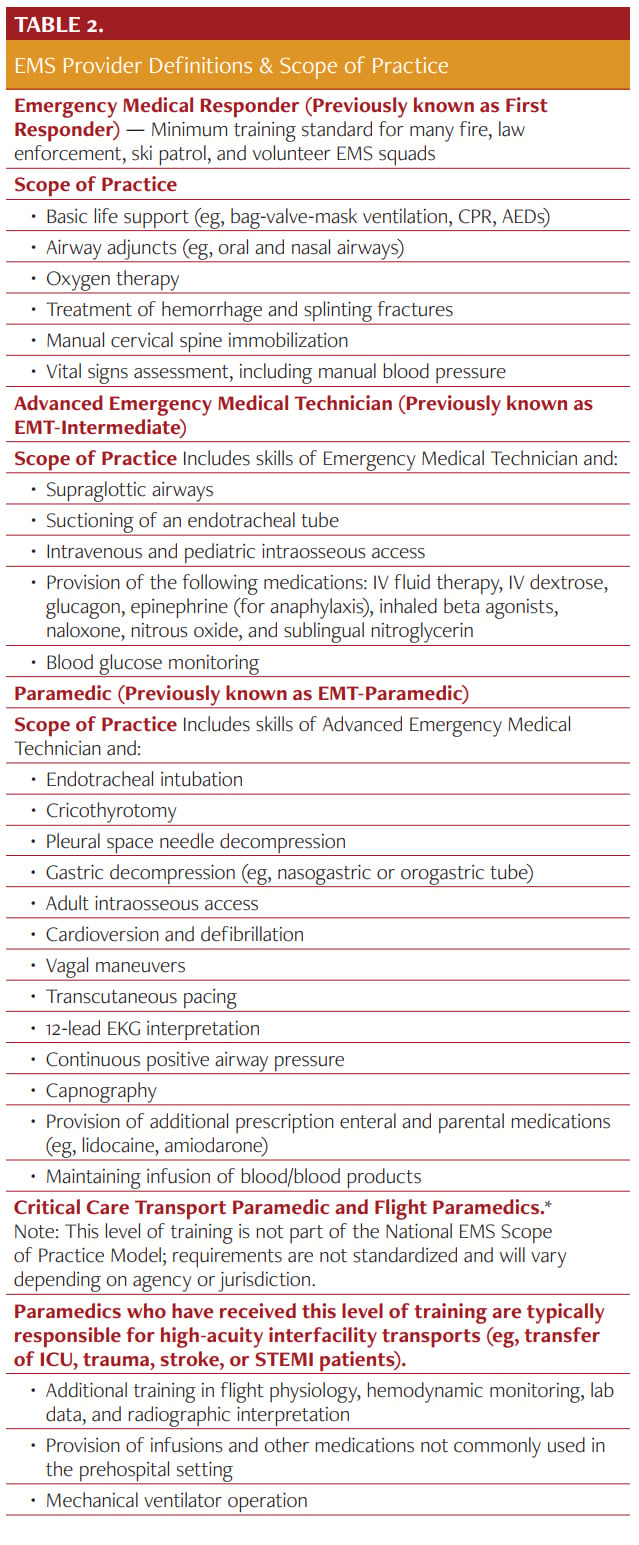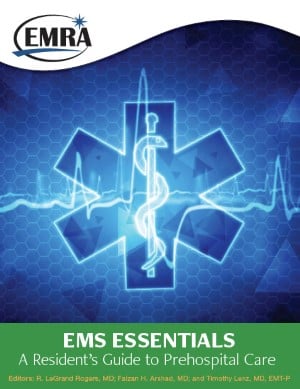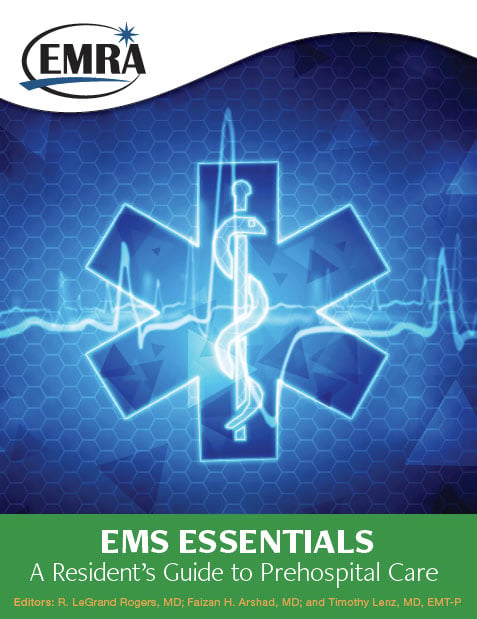Ch. 4 EMS Delivery Models, Provider Levels, and Scope of Practice
EMS has evolved into a multifaceted medical care delivery machine with multiple delivery models catering to geographic and demographic needs - each part integral to the whole and serving a specific role. For example, the 911 service may take a call, transfer it to an EMS dispatcher who then triages the call for response by a firefighter, ambulance company, or law enforce- ment official, each of whom may be a BLS, ALS, or even flight responder. As one can imagine, this takes great effort and orga- nization with clearly defined medical care delivery and provider roles. (Table 1.)

Additional Definitions
Alternate Transport Vehicle – A vehicle used by an EMS agency to move patients from difficult terrain or unusual situations; can include stretcher-equipped golf carts, specially retro- fitted fire engines, and armored personnel vehicles.
Community Paramedic – A service delivery model where paramedics provide home-visit type services, including targeting high-frequency 911 utilizers and patients who are at high risk for hospital re-admission (eg, CHF exacerbation).
Exclusive Operating Area – A jurisdiction, zone, or geo- graphic area that maintains a sole EMS provider that, through a competitive bidding process, has exclusive contractual rights to all emergency transports for a given area.
Fixed Wing Aircraft – An airplane used for EMS transports or specialized medical services such as organ donation transport.
Interfacility Transport – Transfer of a patient between two health care facilities, without the activation of the 911 system. Examples include transferring a patient from a community hos- pital to a trauma center, or from a skilled nursing facility to a dialysis center.
Multiple Role EMS Agency – Emergency service agency that provides public safety services in addition to its role in the EMS system, such as firefighting, hazardous materials mitigation, or law enforcement. Fire and public safety departments commonly fit this model.
Quick Response Vehicle (QRV) – A non-transporting EMS vehicle (eg, an SUV-type automobile) that is part of the initial 911 system response. Usually staffed by a paramedic.
Priority Dispatching – A system used by emergency medi- cal dispatch agencies to triage the severity of 911 calls in order to allocate appropriate resources. In some areas the dispatching protocol may also dictate if emergency signaling devices (eg, red lights and sirens) are to be used.
Rotor-Wing Aircraft – A helicopter used for EMS transport, and sometimes also for search and rescue.
System Status Management – A dynamic deployment model for EMS resources, which uses historical data to deploy (“post”) ambulances where they are most likely to be utilized. (This is in contrast to a fixed deployment model, such as the use of fire stations.)
Tiered Response – Service delivery model in which multiple levels of providers can be dispatched to an emergency. For ex- ample, a basic life support fire department is dispatched along- side a paramedic-staffed ambulance when a 911 medical call is received.
References
- US Fire Administration. Handbook for EMS Medical Directors. FEMA. March 2012.
- NHTSA. National EMS scope of Practice Model. Publication DOT HS 810 657. February 2007.








